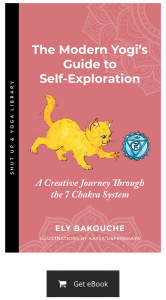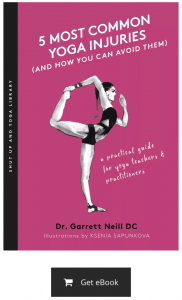JOIN OUR DISCUSSION CALL ON MARCH 22 AT 8 PM EST, AS WE DISCUSS DONNA’S BOOK TOGETHER!
A long time ago, I put Teaching Yoga by Donna Farhi on my never-ending to-read list. I’ve never spent a lot of time in my teacher trainings exploring how to manage the student-teacher relationship, so I figured I could learn a thing or two. I also intuitively understood that this particular topic is not only important but also perennially relevant, given the never-ending scandals that continue to emerge in the yoga world. Inevitably, these scandals always involve transgressions related to the student-teacher relationship.
This became ever more pressing in my own life as a yoga teacher this past year when I somehow found myself directly affected by one of these teacher transgression scandals. It was both maddening and humbling to find myself contemplating how I could have possibly been hoodwinked by a respected teacher. As someone who has a natural proclivity toward professionalism (I was once reprimanded at my job at a yoga company for not including enough exclamation points in my work emails and then sent to a remedial communication class as punishment), I found myself wondering how this could have happened to me.
While I was not directly affected by this teacher’s abuses of power, the fallout of this scandal left me feeling angry, sad, and more motivated than ever to study power dynamics in the student-teacher relationship. I have a deep respect for the teachings of yoga and for the role teachers have played throughout my life, but it gets complicated when you have to reconcile what you’ve learned has come from a very flawed human being who ended up crossing clear ethical boundaries. It’s complicated to navigate the grey area between teacher and friend, especially when you learn that person is not who you thought they were.

So it was with great anticipation that I finally dove into Teaching Yoga, hoping to learn some practical skills for helping me better manage my boundaries with students, but also other teachers, managers, studio owners, and colleagues.
The importance of this exploration of yoga ethics was affirmed for me when Farhi states:
“It is the spiritual context itself that requires of us an even greater commitment to live ethically. It is this uncompromising reverence for life, manifested through our thoughts, speech, and actions, that can lead not only to our own peace and freedom but to a world that is peaceful and free.”
I liked how Farhi effortlessly weaves yoga philosophy, particularly the Yoga Sutra, into her discussion around each topic. In this way, she frames ethics, boundaries, and professionalism as an inherent part of yogic living—a reminder always worth revisiting.
I also appreciated learning more about the concept of transference (when a student projects their own beliefs, feelings, and emotions onto a teacher) and counter-transference (when a student evokes repressed feelings in a teacher) and reading about Farhi’s own personal examples of how she’s dealt with students that challenged her own boundaries. For example, a student may flirt with a teacher “in the hopes of becoming the ‘chosen one’”—an example of transference—and a teacher may have a deep-seated need to feel important and thus revel in attention from his or her students—an example of counter-transference. In both cases, the ability to hold clear boundaries is paramount in upholding a professional relationship between student and teacher, and the responsibility to do so rests solely on the teacher. Farhi’s admissions when she made mistakes gave me permission to make mistakes too since the topic of ethics is fluid and contextual. Farhi warns that if you choose not to engage in such thought experiments examining the student-teacher relationship, you risk career success.
“I have learned that an inability to create, sustain, and if necessary defend clear boundaries is a major cause of exhaustion, illness, and career burnout. Often teachers feel guilty that they have human limits—physical, emotional, and psychic limits.” At the end of the day, no matter what we teach, how many people we teach, who we teach, or how we teach, we’re still human.
While I resonated with many sections, I feel it’s important to note that this book was published in 2006. At times the suggestions felt a little outdated, yet the essence of the lessons are timeless. For example, Farhi advocates for a strong, industry-wide code of ethics, which at the time of publication did not exist. Since then, Yoga Alliance—no matter your feelings about this organization—has formalized a code of ethics for its members to adhere to. While not universal, required, or perfect, it’s a start.
Also, Farhi’s particular style of communication sometimes felt uncomfortable or irrelevant to me. As a world-traveling senior teacher who has been around way longer than me, she offered advice such as have your assistants refuse entry to students who chronically show up late. While I understand the sentiment, I don’t have the luxury of teaching assistants and I hate confrontation. I can’t imagine ever asking a student who shows up a few minutes late to leave the class (even if it happens on a regular basis). I can imagine having a conversation with that student after class asking them to be more timely in the future.
Despite the style differences, the examples presented in the book offer opportunities to contemplate how you would respond to such situations in your own way. Whether you’re a yoga teacher or not, that’s a useful exercise for developing professionalism.
I was pleasantly surprised to find that Farhi explores examples beyond the student-teacher relationship as well. This includes situations as varied as confronting a student who hasn’t paid, to what to do (and say) when a regular student has bad body odor, to how to offer scholarships in a fair and equitable way.
In my own experience, many of these issues fall on studio owners and managers to handle, rather than independent yoga teachers, but as I’ve branched out on my own more and more, I’ve been presented with more situations in which it is necessary to get clear on my “rules” and hold firm to my boundaries.
There is an opportunity, I think, to include a whole new chapter discussing the ethics of teaching yoga online and handling the new challenges that yoga teachers must face when leading yoga classes virtually. While we may not have to deal with body odor, what do you do when you encounter a “Zoom bomber” trying to disrupt your class by shouting obscenities or performing lewd acts on camera? It’s not just a question of what do you do to get rid of the Zoom bomber, but how do you recover as a teacher and protect your students from the trauma of that situation? How do you write your own waivers and set your own classroom expectations?
At the end of the book, Farhi encourages readers to craft their own code of ethics. I did this as an activity in my 300HR Teacher Training and reading this encouraged me to fish it out of my training binder. Crafting your own code of ethics can be a useful, living document to refer back to frequently as you begin to navigate new teaching situations, including online teaching. While there may be some new specifics to manage, the “how” of handling them can always be guided by your individual codes of ethics that you personally agree to uphold as a matter of principle and integrity. I also appreciated the model Farhi presents on how to intervene when presented with difficult situations and believe this model can be applied universally—in-person and online.
This book is great for getting you to think about how you handle yourself as a teacher. Farhi says: “…because Yoga is a lifelong apprenticeship in which our own life is the laboratory of inquiry, the desire to be ethical requires an ongoing practice of reflection.” Indeed, this book will make you think. You will disagree with what Farhi suggests at times. You might feel like certain situations aren’t relevant to you. You might even get uncomfortable as you discover that you’ve handled situations ineffectively in the past.
What I appreciated about this book is that Farhi is very clear that, at the end of the day, it’s up to you to uphold your own integrity and maintain the boundaries that will keep you and your students safe. She isn’t telling you what to do or what to think or how to teach. She offers real-world examples to get you thinking about what you would do when presented with tricky interpersonal situations, which are inevitable in this profession. And that is something all of us can spend a little more time thinking about, in service of the yoga teaching profession as a whole.

This review is part of our SU&Y Book Club hosted by Ashley Zuberi.
Edited by Jordan Reed
Book club illustration by Katya Uspenskaya
You can buy Teaching Yoga by Donna Farhi on Amazon & review it on Goodreads.




